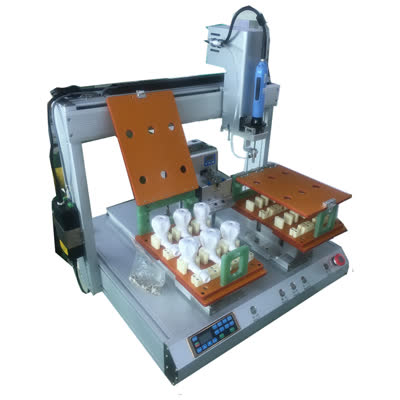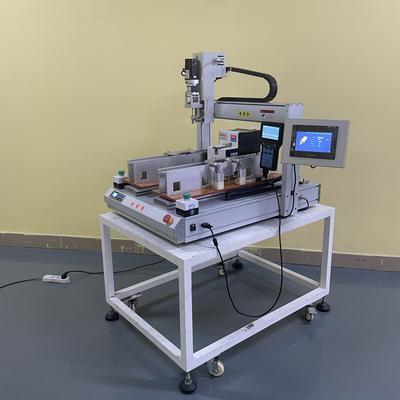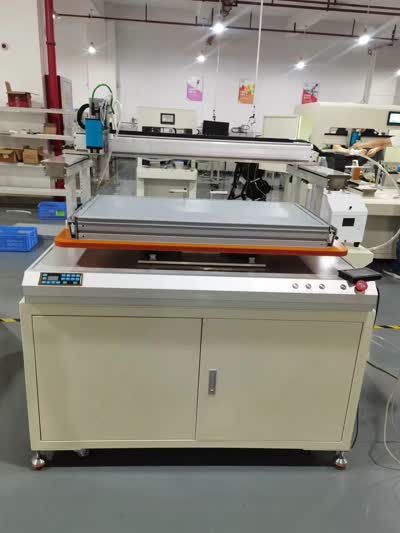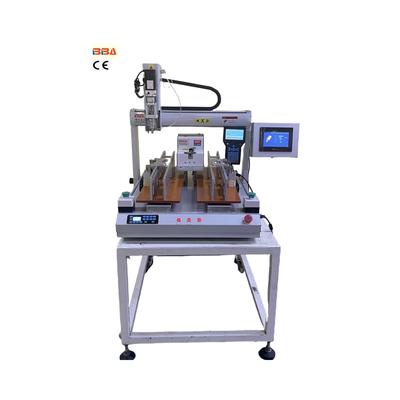Home Appliance Assembly Automation | Robotic Screw Driving Solution | Efficient and Precise Tightening Technology

Robotic Screw Driving for Home Appliance Assembly
In the competitive world of home appliance manufacturing, efficiency and precision are paramount. From washing machines and refrigerators to ovens and microwaves, the assembly process relies heavily on the crucial task of screw driving. Traditionally, this was a manual operation where human workers spent hours securing components together, often leading to inconsistencies, fatigue, and increased error rates. Manual screw tightening can result in under-torqued fasteners that loosen over time or over-torqued ones that damage materials, compromising product reliability and safety. These challenges not only slow down production but also escalate costs through rework, recalls, and potential safety hazards. However, the advent of robotic screw driving technology is transforming this landscape, offering a smarter, more efficient solution for home appliance assembly lines.
Robotic screw driving involves sophisticated automation systems where collaborative robots or robotic arms, equipped with specialized end-effectors, perform the precise act of driving screws. These units integrate with programmable controllers, torque sensors, and vision systems to locate fastener points on appliances automatically. For example, in assembling a refrigerator door, a robot can identify hinge points using cameras or lasers, apply consistent torque to each screw according to preset parameters, and verify the quality in real-time. This eliminates the variability inherent in manual processes, ensuring uniformity across all products. The technology leverages advanced software for rapid adaptability, allowing operators to reprogram settings for different screw sizes, materials, or configurations with ease. Key components, such as auto-feeding screw presenters, ensure a continuous supply of fasteners, minimizing downtime and boosting throughput. By automating such repetitive tasks, robotic screw driving not only enhances accuracy but also frees human workers to focus on more complex, value-added activities in the production line.
The advantages of this technology for home appliance assembly are extensive and immediate. First and foremost, it dramatically increases productivity, enabling faster cycle times and higher output volumes. Robots operate continuously for 24/7 shifts without fatigue, reducing overall production time and meeting aggressive deadlines. Secondly, precision is significantly improved, ensuring that every screw is tightened to exact specifications. This minimizes defects, scrap rates, and warranty claims while enhancing product durability and consumer safety. In practical terms, a robotic screw driver can achieve torque accuracies within plus or minus one percent, far surpassing human capabilities. Additionally, automated systems promote greater workplace safety by removing ergonomic risks—such as repetitive strain injuries from manual twisting—and minimizing exposure to hazards in noisy or high-speed environments. Reliability is another key benefit; our innovative solutions incorporate predictive maintenance features, alerting operators to potential issues before they cause breakdowns, thus supporting uninterrupted operations and extending equipment lifespan. Appliances across the spectrum benefit from these systems, from securing panels on dishwashers to fastening internal components in air conditioners, making robotic screw driving a universal upgrade for modern factories.
Implementing robotic screw driving solutions offers a competitive edge for manufacturers seeking to optimize their home appliance assembly processes. Our cutting-edge systems feature modular designs that integrate seamlessly into existing production lines with minimal retrofit requirements, providing a hassle-free transition to automation. Operators can control the robots through intuitive interfaces, making programming and monitoring straightforward even for non-specialists. The adaptability of our technology allows customization for diverse screw types and assembly needs, including low-profile screws in tight spaces or sensitive electronics assembly where over-torque protection is critical. Data analytics capabilities generate insights into performance metrics like throughput rates and quality trends, enabling continuous improvement through informed decisions. Ultimately, adopting robotic screw driving translates to substantial cost savings from reduced labor, material waste, and energy consumption. As the home appliance industry evolves with demands for smarter, safer products, embracing these automated solutions becomes not just an option, but a strategic imperative for growth and innovation.
The shift to robotic automation in home appliance assembly represents a significant leap in manufacturing excellence. For manufacturers, the move means enhanced product quality and reliability, leading to greater customer satisfaction and brand loyalty over time. By automating repetitive screw driving tasks, production teams gain newfound efficiency, allowing them to scale operations and innovate rapidly in a fast-paced market. Looking ahead, advancements in artificial intelligence and machine learning promise even more intelligent systems capable of self-optimization and predictive adjustments. Embracing this technology now positions companies at the forefront of industrial progress, ready to meet future challenges while delivering superior home appliances that stand the test of time.
| Product Name | Applicable industries |
| Servo Screwdriver Robot | Smart Wearables Production |


